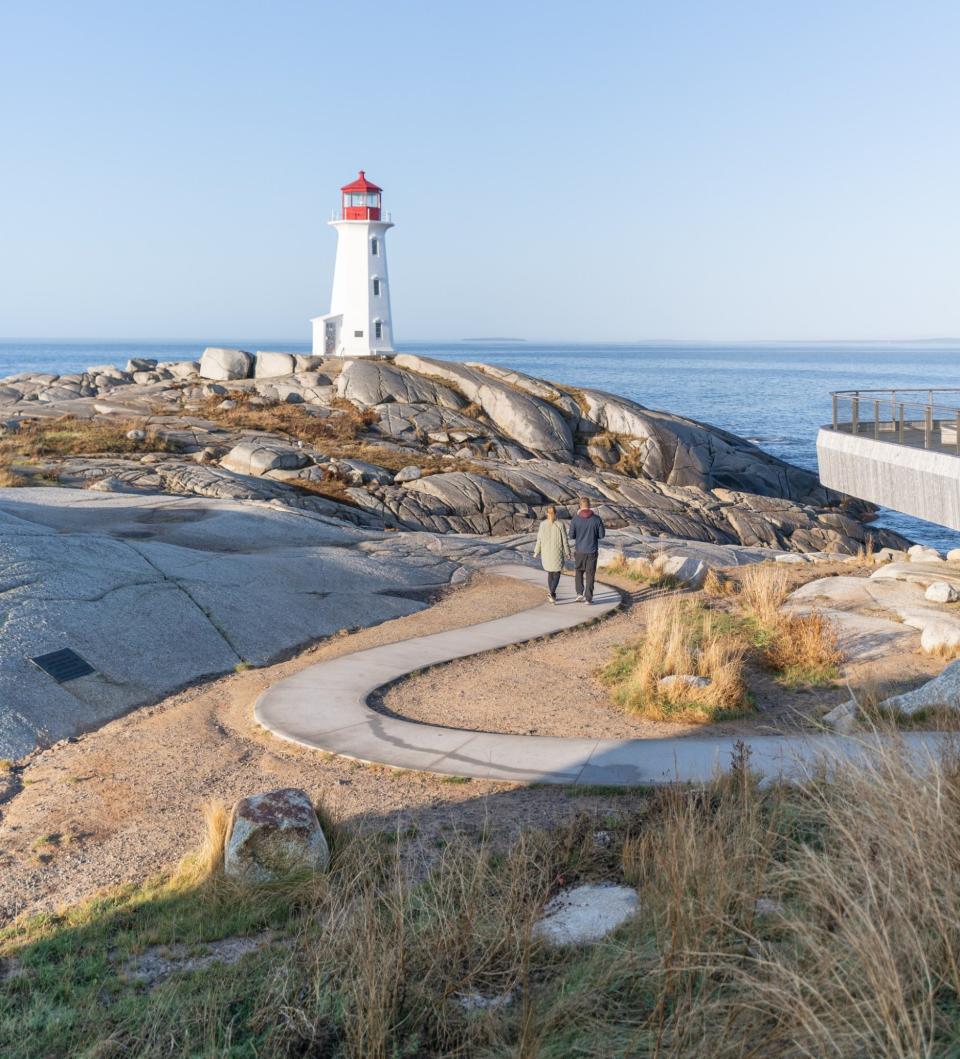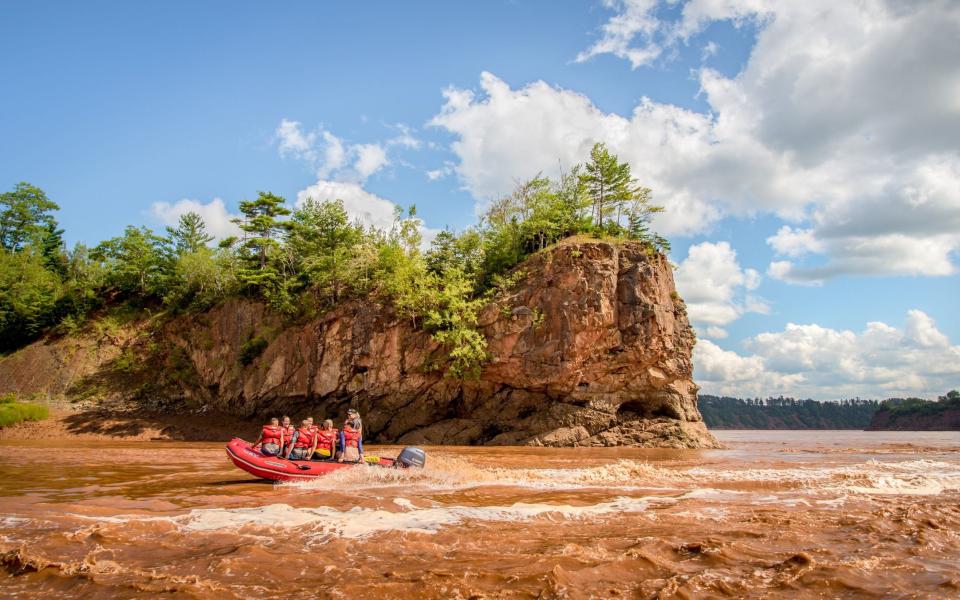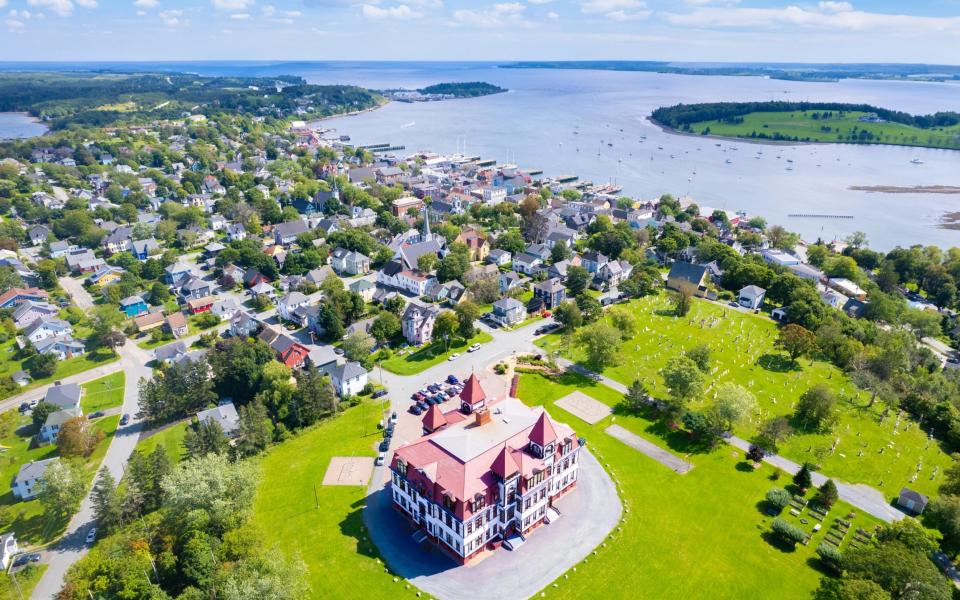Nova Scotia feels like a place that should be remote, northern and, above all, cold. It’s perhaps surprising, then, that flights from London to its capital, Halifax, take less than six hours. Perhaps even more surprising, this southeastern corner of Canada lies on roughly the same latitude as Burgundy. And yes, it does have some notable vineyards that produce award-winning wines.
But the name Nova Scotia was not the first. It was known much earlier, perhaps more appropriately, as Acadia. Does this refer to the Elysian Fields rather than a frozen north? One possibility is that the name was coined by explorer Giovanni da Verrazzano in the 16th centurypearl-century map. Again, it may be from the local indigenous Mi’kmaq language – “Cadie” means fertile land. No one knows for sure, but Acadians still live there, descendants of the first settlers who arrived from France in 1605, 15 years before the Mayflower set sail.

It’s no paradise – winters are not for the faint-hearted – but when summer finally arrives towards the end of May, it’s clear it’s worth the wait. Nova Scotia may be a forested wilderness filled with bears, moose and raccoons, but the sea really takes centre stage. The prettiest villages are dotted along its 7,500km of coastline: At Peggy’s Cove, population just 32, you’ll find one of Canada’s most photographed spots, with granite boulders and an iconic lighthouse (Nova Scotia has 160).
And it’s certainly one of the few places where a road trip can still be an enjoyable experience: the roads are almost eerily empty. Canadian drivers are so careful and polite that navigation can be confusing for anyone used to British roads. At a junction, for example, the first car to arrive has priority, then drivers take turns in an anti-clockwise direction. If a pedestrian stops at the side of the pavement, traffic tends to come to a standstill while you decide whether to cross or not.


When you’re not on the road, you’re probably on the water. In fact, you’re never more than 60km from the ocean in Nova Scotia, and the coast is packed with boats of all kinds – canoes and sailboats, rowboats and rowboats. Not only is Lunenberg a UNESCO World Heritage Site, but there are also traditional schooners that can take you whale watching. Adrenaline seekers might want to try tidal rafting: the Bay of Fundy has the highest tides in the world, turning the Shubenacadie River into a water-powered roller coaster. Hop on that Zodiac if you dare.
Back on land, there are hiking trails through forest, past vineyards and along the gorgeous coast where fishing fleets work hard. It’s hard to find fish here that’s not fresh, and of course Nova Scotia’s shellfish are especially famous. The “scattered lobster” (is there another kind?) is a staple on the menu, but you can also opt for a slightly more manageable lobster roll. Digby, on the Annapolis Valley coast, is the “scallop capital of the world,” and you can eat the delicious mollusks any time of day (and that includes breakfast).


The Acadians were originally farmers, but due to the hardships of both the soil and the climate, they turned to fishing for survival (their descendants, the Cajuns of Louisiana, are still quite fond of their shrimp and oysters). The coastline provided safe natural harbors not only for fishing boats but also for navies. The Acadian Port-Royal became the Annapolis of Britain, and its fort was still one of the most fought-over places between England and France during the 18th century.pearl century.
Crown loyalists fled to Nova Scotia in the American War of Independence, and former slaves joined the British Army on the promise of freedom (never fully fulfilled). Then came Scottish pioneers, who restored the original name of James I’s new colony.


So where to put your head? Avoid the obvious. Nova Scotia is full of unusual places to stay, including a yellow Victorian-Gothic mansion in Yarmouth, a sea container with a geodesic dome and fire pit in Wolfville and views over a completely empty Acadian beach. You see, only seabirds come in droves to Nova Scotia.
Fundamentals
Air Canada (aircanada.com) offers direct flights from Heathrow to Halifax from £542.99 return. Gothik House (thegothik.ca) in Yarmouth has double rooms with breakfast from CA$120 per night; Valley Sky Glamping (valleysky.ca) has geodesic domes with decks, barbecues and fire pits from CA$245.
Anna Selby was a guest of Tourism Nova Scotia (novascotia.com) and Destination Canada (explore-canada.co.uk)